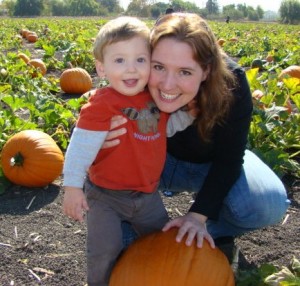By Bonnie Harris, M.S.Ed., director of Connective Parenting, www.bonnieharris.com, reprinted with permission
The more stories I hear from parents, the more I know that trusting our children’s capabilities and detours is the path to connected relationships and success. Sometimes trusting our children goes against our standards of good parenting.
But who are we to know what our children should do with their lives; who are we to know what they need in order to get there? Our job is to remove the obstacles in their way of reaching their potential and accept and support who they are so they will have a firm foundation on which to launch into their futures.
A parent in my group put trust to the test. Her son didn’t like to read. He figured out a loophole in the school’s point system for reading. If he performed poorly, he would be put in the achievement bracket that required fewer points to get by. “He basically was reading See Spot Run books,” his mother told us. Her husband, who does not read, was furious and kept on him to no avail. She supported his decisions and left the process up to the school, although she did share her own experience of pleasure from reading. Allowing him to fail and trusting his reading capability, she maintained connection. With her trust, he discovered Harry Potter and everything changed.
When my daughter was little she begged to play the violin for a couple of years before I found a teacher. Practice turned grueling. When we reached the point where our relationship was at risk, I allowed her to stop. A year later, of her own accord, she took it up again. At 13, she bought herself a $1,700 violin. Today she is a professional composer. Who knew?
When we support and trust who our children are and know it is not up to us to find their gifts and talents, we learn that all they need is self-confidence to find their way.
Children resist with all their might when they think we are against them—when we criticize, blame, threaten, lecture—when they don’t trust that we understand and accept them. To find their way, they need to trust us to trust them.
We parent by the misconception that our job is to teach our children how to act and perform in the world, and if they don’t do it right (according to whom?) then they must be forced with some kind of manipulative, punitive tactic to get them on track. What track? Whose track? What if your child is meant to establish a new track or a track you don’t approve of? What if it’s a track that public schools don’t teach?
We are fraught with the anxiety of parenting, fearing our children will fail unless we teach them … What? How did you like your parents telling you what to do and when to do it? Did you ever think, They’re clueless, they don’t understand me, they don’t trust me?
What children need from us is our guidance and leadership. They need us to keep them safe and to make the big decisions they cannot be expected to make—to know that they should not be expected to act like a grown-up to know better, to understand tooth decay, to want them to do their homework, to hurry to get out the door in the morning.
We must trust that they want to be successful, that they want to please us, the most important people in their lives. They want to learn; they want to find their paths. It’s when we get in their way with our own agendas, our critical tones, and our disapproving eyes that they come to the conclusion there is nothing out there for them and that the most important people in their lives can’t be trusted.
Guidance and leadership does not mean engaging in power struggles to prove our rightness and put down their arguments. It does not mean punishing them, taking away their favorite things, isolating or grounding them—making them feel miserable and thinking that will motivate them to do better. Likewise, it does not mean manipulating them with bribes and rewards. Our intentions are well-placed; the methods we use to motivate are misguided and wrong. They send our children in the direction we most fear. They leave our children floundering in a world of unpredictability where they turn to their peers for guidance and leadership.
Practice trusting. Start by simply listening and truly hearing what they are trying to tell you, even and especially when you don’t like the noise they are making.





 As each new talent emerges, toddlers get busy and forget to do lots of things: watch in front of them when moving, pick up toys before stepping on them, and eat. They fight the fork, the spoon, and even self-feeding in an effort to get back to their most important work: play.
As each new talent emerges, toddlers get busy and forget to do lots of things: watch in front of them when moving, pick up toys before stepping on them, and eat. They fight the fork, the spoon, and even self-feeding in an effort to get back to their most important work: play.